Are you interested in opening a martial arts school but don know where to start worry we got covered. this step-by-step guide walk through the process of how open school. learn everything from conducting market research and developing business plan choosing right location creating comprehensive curriculum effective marketing strategies. by end have knowledge tools need successful.
Introduction
Are you passionate about martial arts and want to share your knowledge with others? Opening a martial arts school can be a rewarding experience both personally and professionally.
Not only can you inspire and educate others while doing something you love, but you can also build a successful business that provides a valuable service in your community. However, starting a martial arts school requires careful planning, research, and knowledge of the market and regulations. In this guide, we will provide you with a step-by-step process to help you successfully open and manage your own martial arts school.
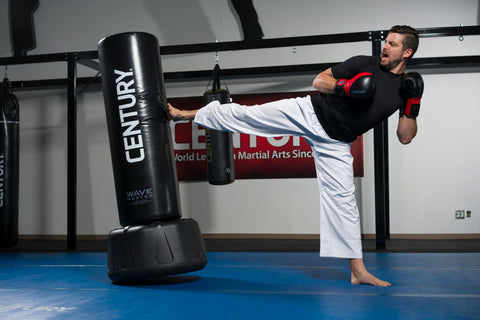
Market Research and Planning
Before opening a martial arts school, it's crucial to conduct extensive market research and develop a comprehensive business plan. These steps will help you identify your target audience, understand your competitors, and determine your unique selling proposition.
Conducting Market Research
To conduct effective market research, begin by analyzing the demographics of the area where you plan to open your martial arts school. Factors such as age, income, occupation, and education level can help you understand the needs and interests of your potential customers. This information will help you tailor your services to meet their needs.
Additionally, research your competition. Identify other martial arts schools in your area and analyze their strengths, weaknesses, and pricing strategies. This will help you determine how to differentiate yourself from them and provide unique value to your customers.
Developing a Business Plan
After conducting market research, develop a comprehensive business plan that outlines your goals, strategies, and financial projections. Your business plan should include:
A Description of Your Business
- A clear and concise mission statement that defines your business's purpose and values.
Market and Competition Analysis
- A detailed analysis of your target market and competitors, including their strengths, weaknesses, and pricing strategies.
- An outline of your unique selling proposition and how it will help you stand out in the market.
Services and Pricing Strategies
- An overview of your martial arts services, including the different programs and classes you offer.
- A detailed pricing strategy that outlines how much you will charge for your services.
Marketing and Promotion Plan
- A detailed plan for how you will market and promote your martial arts school to attract new students.
- A clear description of your online marketing strategies, including social media, email marketing, and SEO.
- A detailed plan for local marketing tactics that will help attract students in your community.
Financial Plan
- A detailed financial plan that includes revenue projections and expenses.
- A clear description of your funding sources and how you will manage cash flow.
- A clear description of your key performance indicators and how you will track them to ensure the financial success of your martial arts school.
By conducting thorough market research and developing a comprehensive business plan, you'll be well on your way to opening a successful martial arts school.
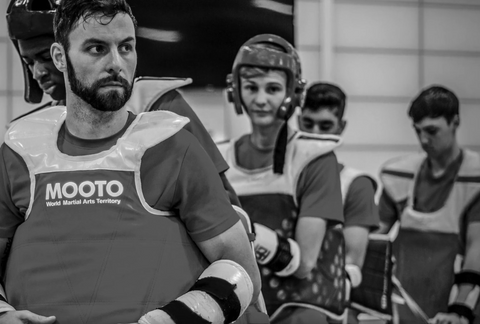
Legal Requirements and Regulations
Before opening a martial arts school, it is important to comply with various legal requirements and regulations. This involves obtaining the necessary licenses and permits, as well as adhering to safety and health regulations.
Understanding Legal Requirements and Regulations
To understand the legal requirements and regulations for opening a martial arts school in your area, consult with local government agencies. For instance, the Department of Business and Professional Regulation can provide guidance on necessary permits and licensing requirements.
In addition, it is crucial to research safety and health regulations related to martial arts schools. This includes equipment safety, injury prevention, and emergency response procedures. Make sure to comply with these regulations to ensure the safety of your students and instructors.
Obtaining Necessary Licenses and Permits
To obtain the necessary licenses and permits, contact your local government agencies and follow their application procedures. This may include obtaining a business license, a building permit, and a martial arts instructor license. It is essential to obtain these permits and licenses before opening your martial arts school to avoid any legal issues in the future.
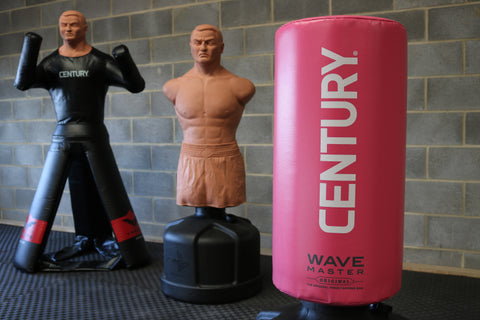
Location and Facilities
Choosing the right location and designing your facility is crucial for the success of your martial arts school. A well-designed facility creates a positive learning environment and attracts students. Here are some tips to get it right:
Choosing the Right Location
When searching for a suitable location to establish your facility for martial arts training, it's crucial to take several factors into consideration. Accessibility, safety, and visibility should be at the forefront of your decision-making process. Opt for a location that is easily accessible, ideally with convenient public transportation options and sufficient parking facilities.
Safety is paramount, so ensure that the area is secure and free from potential hazards. Moreover, choose a location that offers good visibility to attract potential customers. If you find that prices for commercial spaces are too high, exploring alternative options like renting out community centers, schools, or other activity venues can provide a more affordable solution while still meeting your requirements.
Insider tip
Consider the demographics of the surrounding area. If your target audience is families with young children, look for a location near schools or residential areas.
Designing Your Facility
Design your facility with your students in mind. Prioritize creating a safe and comfortable environment that encourages learning. Some things to consider when designing your facility include:
- Proper flooring, padding, and equipment to prevent injuries
- High ceilings and natural lighting to create a spacious and welcoming atmosphere
- Climate control to ensure a comfortable temperature year-round
- Amenities such as a waiting area, changing rooms, and restrooms
Insider tip
Make sure your facility is equipped with a sound system that is loud enough for your students to hear you, especially if you have a large class.
Personal Experience
When I first opened my martial arts school, I struggled to attract new students. Despite offering a comprehensive curriculum and competitive pricing, my enrollment numbers weren't what I had hoped for. That's when I decided to invest in marketing and promotion.
I started by creating social media accounts for my school and regularly posting updates and photos. I also began sending out a monthly email newsletter to my subscribers, offering promotions and highlighting student achievements. But what made the biggest difference was my local marketing tactics.
I partnered with a nearby gym to offer joint promotions and hosted a free community self-defense seminar. These efforts helped me to reach a wider audience and attract new students to my school. By investing in marketing and promotion, I was able to increase my student enrollment by 50% in just six months.
Insider tip
When choosing a location, research the local competition to see what they offer and how you can differentiate your business. Offer unique amenities or programs to stand out from the crowd.
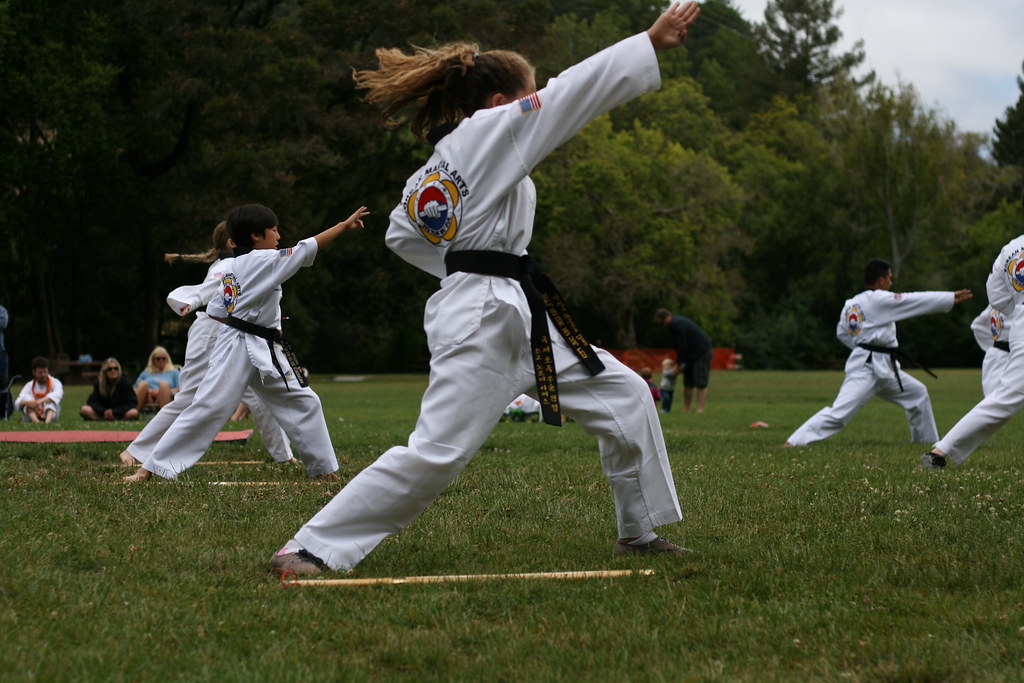
Curriculum and Instruction
Developing a comprehensive martial arts curriculum and instructional program is critical to the success of your martial arts school. Your curriculum should be tailored to the needs and interests of your students and provide a clear path for advancement.
Developing a Comprehensive Curriculum
To develop a comprehensive curriculum, you need to consider the needs and interests of your target audience. This will help you determine which martial arts styles and techniques you will teach and how to structure your curriculum. Here are some tips for developing a comprehensive curriculum:
- Identify your goals: Determine what you want your students to achieve and what skills you want them to develop. This will help you design your curriculum accordingly.
- Choose your style: Decide which martial arts style you want to teach and research the different techniques and approaches associated with it.
- Design your curriculum: Develop a progression system that clearly outlines the requirements for advancement. Break your curriculum into different levels, each with its own set of skills and techniques to be mastered.
- Provide variety: Offer a variety of classes and training options to keep your students engaged and motivated. This can include sparring, self-defense, weapons training, and more.
By tailoring your curriculum to the needs and interests of your students, you can create a unique and engaging learning experience that sets your martial arts school apart from the competition.
Hiring and Training Qualified Instructors
To provide quality instruction, you need to hire and train qualified martial arts instructors. Look for instructors with experience and certification in your chosen martial arts style. Additionally, provide ongoing training and professional development opportunities to ensure that your instructors are up to date with the latest techniques and teaching methods. Here are some tips for hiring and training qualified instructors:
- Skills and experience: Look for instructors with a strong background in your chosen martial arts style, as well as experience teaching students of all levels.
- Certification: Ensure that your instructors are certified by a reputable organization in your chosen style.
- Personality and teaching style: Choose instructors who are personable, patient, and have a teaching style that aligns with your school's philosophy.
- Continuing education: Provide ongoing training and professional development opportunities to keep your instructors up to date with the latest techniques and teaching methods.
By hiring and training qualified instructors, you can ensure that your students receive high-quality instruction that helps them achieve their goals and advance in their martial arts practice.
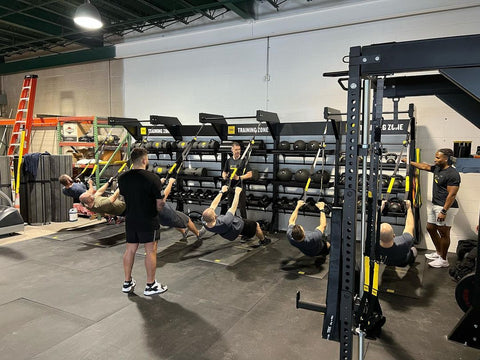
Stocking Up on Equipment
As you embark on this rewarding endeavor, one crucial aspect to consider is stocking up on top-quality equipment. Investing in high-grade gear not only enhances the training experience but also ensures the safety and progression of your students. When it comes to purchasing martial arts equipment, it is paramount to buy from a reputable source.
Trusted suppliers offer a wide range of equipment options, including uniforms, punch bags, strength & conditioning gear, speed & agility tools, or pads for your workouts designed to meet the diverse needs of practitioners. By sourcing your equipment from a reputable supplier, you can rest assured that you are investing in products that meet the highest standards of quality and durability.
This not only enhances the credibility of your martial arts school but also fosters a sense of trust among your students and their parents, creating a solid foundation for success.
Register with Bytomic Trade and access equipment at exclusive wholesale rates. Equip your martial arts students with the right attire, gear, and protection. Click the link to join today!
Class Scheduling and Management
Creating a class schedule that meets the needs of your students and instructors is critical to the success of your martial arts school. By providing a schedule that works for everyone, you can ensure that your students remain engaged and motivated to attend classes. Additionally, managing student enrollment, attendance, and progress is important to ensure that students are progressing through the curriculum and achieving their goals.
Creating a Class Schedule
When creating a class schedule, consider the availability of your instructors and the needs of your students. Offer classes at convenient times and provide a variety of class formats to appeal to different learning styles. Here are some tips to create a class schedule that works for everyone:
- Conduct a survey among your students to determine their preferred class times.
- Consider offering both morning and evening classes to accommodate different schedules.
- If you have multiple instructors, coordinate with them to ensure that classes are spread evenly throughout the day.
- Offer a variety of class formats, such as group classes, private lessons, or workshops, to appeal to different learning styles.
Managing Student Enrollment, Attendance, and Progress
To manage student enrollment, attendance, and progress, consider using a software program or tool that allows you to track student information and progress. This tool can help you to easily manage student attendance, track their progress through the curriculum, and communicate with them about upcoming events or promotions. Additionally, provide regular feedback and evaluations to ensure that students are progressing through the curriculum and achieving their goals. Here are some tips to help you manage student enrollment, attendance, and progress:
- Use a student management software program to track student information and progress.
- Provide regular feedback and evaluations to ensure that students are progressing through the curriculum.
- Encourage students to attend classes regularly by offering incentives or rewards for attendance.
- Communicate with students regularly about upcoming events or promotions.

Marketing and Promotion Strategies
Marketing and promoting your martial arts school is crucial to attract new students and grow your business. Developing effective marketing strategies that resonate with your target audience is key. There are various marketing channels you can use to attract potential customers, such as social media, email marketing, SEO, and local marketing tactics.
Identifying Your Target Audience
Before developing your marketing plan, you need to identify your target audience. Consider factors such as age, gender, income level, location, and interests. Once you have a clear understanding of your audience, you can tailor your marketing messages and choose the most effective channels to reach them.
Developing a Comprehensive Marketing Plan
Developing a comprehensive marketing plan involves creating a strategy that utilizes different marketing channels. Social media platforms such as Facebook, Instagram, and Twitter can help you build brand awareness and engage with your audience. Email marketing can be used to nurture leads and keep your audience up-to-date with news and events. SEO can help your website rank higher in search engine results pages, making it easier for potential customers to find you.
Building a Strong Online Presence
Building a strong online presence is vital for any business. In the case of a martial arts school, social media can be a powerful tool to showcase your classes, instructors, and facilities. Use high-quality images and videos to showcase what makes your school unique and attractive to potential students.
Utilizing Local Marketing Tactics
Utilizing local marketing tactics can help you reach potential customers in your area and build a sense of community. Consider partnering with local businesses and organizations to co-promote your martial arts school and reach a wider audience. Flyers, brochures, and community events can also be effective ways to raise awareness about your school and attract new students.
Remember, developing a comprehensive marketing plan takes time and effort. Be patient and persistent, and track your results to determine what is working and what needs improvement.
Financial Planning and Management
Managing your martial arts school's finances is crucial for the success of your business. It is important to focus on budgeting, pricing, revenue streams, securing funding, managing cash flow, and developing financial projections to ensure that you stay on top of your finances.
Budgeting
Developing a budget that includes revenue projections and expenses is essential to managing your finances. Consider using tools like Microsoft Excel or Google Sheets to help you create a detailed budget. This will allow you to better understand your cash flow and make informed financial decisions.
Pricing Strategy and Revenue Streams
Determine your pricing strategy and revenue streams based on your target audience and competition. Consider offering class fees, merchandise sales, and private lessons to increase your revenue streams. Ensure that your pricing is competitive, but also profitable.
Securing Funding
Securing funding is critical to getting your martial arts school started. Consider obtaining a small business loan or seeking funding from investors. Be prepared to present a solid business plan to potential investors or lenders.
Managing Cash Flow
Managing cash flow is a crucial aspect of financial planning and management. It is important to monitor your cash flow carefully to ensure that you have enough funds to cover expenses. Consider using tools like cash flow statements to help you keep track of your cash flow.
Financial Projections and Key Performance Indicators
Developing financial projections and tracking key performance indicators can help you monitor the financial health of your business. Track metrics such as revenue, expenses, and student retention to ensure that your business is on track to meet your financial goals. Use tools like financial software to help you create financial projections and track your performance indicators.
By focusing on financial planning and management, you can ensure the long-term success of your martial arts school.
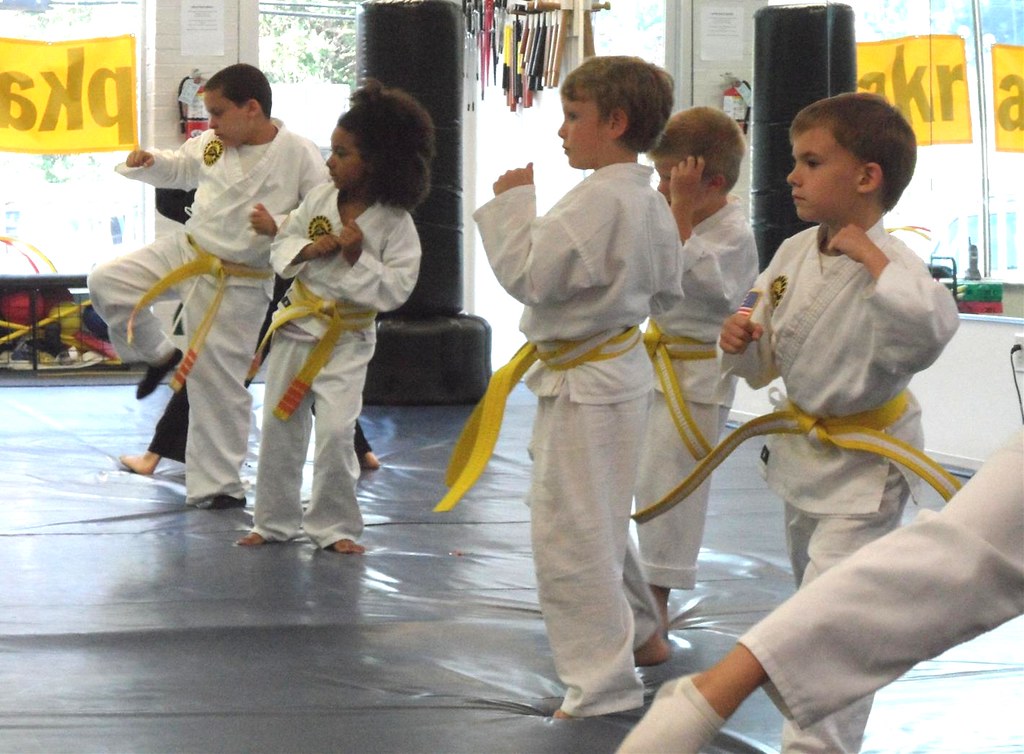
Additional Considerations
Apart from the main components discussed in this article, there are several other considerations to keep in mind when opening a martial arts school.
Developing Your Martial Arts Philosophy
Developing a martial arts philosophy is crucial to creating a positive and supportive environment for your students. It will help you define the values and principles that guide your teaching, as well as establish a clear vision and mission for your school.
Providing a Safe and Inclusive Environment
Providing a safe and inclusive environment is essential to creating a positive learning experience for your students. Ensure that your school is equipped with proper safety equipment, and that your staff is trained in first aid and emergency procedures. Additionally, strive to create an inclusive environment that welcomes students of all backgrounds and abilities.
Leveraging Technology to Enhance Learning
Leveraging technology can help you enhance the learning experience for your students. Consider incorporating online resources, such as instructional videos and virtual training sessions, into your curriculum. You can also use technology to manage class schedules and student progress, making it easier to track student performance and adapt to their individual needs.
Continuing Education for Instructors
Continuing education for instructors is essential to maintaining the quality of instruction at your martial arts school. Encourage your instructors to attend workshops and training sessions, and provide opportunities for them to expand their skills and knowledge. This will not only benefit your instructors, but will also benefit your students by ensuring they receive high-quality instruction.
Providing Opportunities for Students to Compete
Providing opportunities for your students to compete can be a great way to motivate and challenge them. Consider hosting in-house tournaments or participating in local competitions. This can help your students develop their skills, build confidence, and foster a sense of community within your school.
Building a Positive Martial Arts Community
Building a positive martial arts community is crucial to the long-term success of your school. Encourage your students to support and motivate each other, and foster a culture of mutual respect and appreciation. Additionally, consider hosting community events and volunteer opportunities, such as charity fundraisers or self-defense workshops, to build relationships with your local community.
By considering these additional factors, you can help ensure the success of your martial arts school and provide a positive and rewarding experience for your students.
Conclusion
Opening a martial arts school can be a challenging but fulfilling process that can yield great rewards for the owner, the community, and the students. By following the comprehensive guide outlined in this article, you can create a successful martial arts school that provides exceptional services to your students while generating a steady stream of revenue for your business.
To successfully open a martial arts school, it's crucial to conduct thorough market research, develop a comprehensive business plan, and identify your target audience and unique selling proposition. Once you've accomplished these initial steps, you'll need to ensure that you meet all legal requirements and regulations for opening a martial arts school in your area, acquire the necessary licenses and permits, and choose a location that matches your business's needs.
Designing your facility, outfitting it with the necessary equipment and amenities, developing a comprehensive martial arts curriculum, hiring and training qualified martial arts instructors, and creating a class schedule that meets the needs of your students and instructors are just some of the other critical steps in opening a successful martial arts school.
To ensure the longevity of your business, it's essential to have a well-planned marketing and promotion strategy that includes building a strong online presence, utilizing local marketing tactics, and developing effective marketing strategies to attract new students to your school.
Financial planning and management are other crucial components of running a successful martial arts school. By budgeting, pricing, and managing your finances effectively, you can secure funding, manage cash flow, develop financial projections, and track key performance indicators.
In addition to these critical components, you should also develop your martial arts philosophy, provide excellent customer service, and create a positive martial arts community to stay up-to-date with industry trends and best practices.
In conclusion, opening a martial arts school is a complex but rewarding process that requires careful planning, hard work, and a commitment to excellence. With the right approach and mindset, you can create a thriving martial arts school that makes a positive impact on your community while generating consistent revenue for your business.
Answers To Common Questions
Q. Who can open a martial arts school?
A. Anyone with passion, knowledge, and a solid business plan.
Q. What are the legal requirements for opening a martial arts school?
A. Obtaining necessary licenses and permits, adhering to safety and health regulations.
Q. How do I find qualified martial arts instructors?
A. Look for instructors with experience and certification in your chosen style.
Q. What if I don't have enough funding to open a martial arts school?
A. Consider obtaining a small business loan or seeking funding from investors.
Q. How can I differentiate my martial arts school from competitors?
A. Offer unique amenities or programs, create a strong online presence.
Q. What if I struggle to attract new students to my martial arts school?
A. Consider investing in marketing and promotion, partnering with local businesses.
